Are you thinking about painting your birdhouse to attract more birds? Some colors are more attractive than others. I’ll share research that scientifically proves the best colors to choose while painting your bird nesting box.
Winners of the Young Scientist Award determined that birds are attracted to high-energy wavelength colors including green, purple, and blue. A Royal Society for the Protection of Birds study showed that the birds consider blue the most popular during the summer. Goldfinches prefer the color green.
As you learn in greater detail below, some birds are attracted to other callers but they mainly prefer the high-energy colors mentioned above.
We’ll cover the following topics below:
- Painted birdhouse color guide
- Birds attracted to painted birdhouses
- Colorful bird feeders that attract birds
- Birdhouse color FAQ
- and more
Keep reading to learn everything you need to know about birdhouse colors that attract birds.
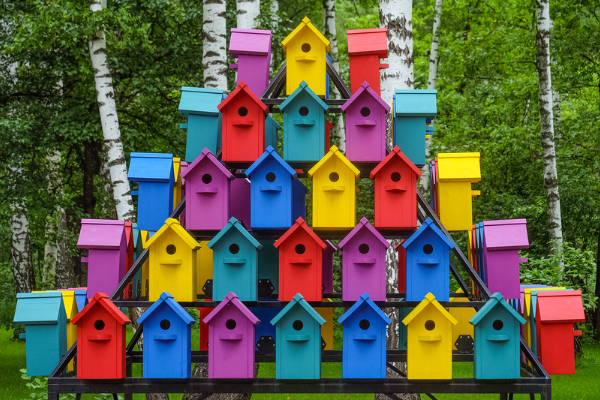
Painted Birdhouses: A Color Guide For Attracting Birds
Backyard bird watchers attempt to do everything in their power to attract birds to their nesting boxes, bird feeders, and other attractions. In this particular case, it’s important to know the best colors to choose when sprucing up your painted birdhouse.
Are certain yard decorations keeping your favorite birds away? Is your attractive garden failing to bring birds to your backyard because your birdhouse and bird feeders are of the wrong colors? Is it safe to actually paint the birdhouse in the first place?
Today, I’m going to answer these important questions and more. Not only will I reveal the favorite colors of birds, but I’ll also tell you which birds are attracted to specific colors in general. This will help you choose the ideal color to paint your birdhouse to attract your favorite bluebirds, robins, sparrows, chickadees, nuthatches, and more.
On the other hand, you do not want to attract predators. So, I’ll also tell you which colors to avoid to prevent attracting unwanted guests or predators to your backyard.
Can You Put Bird Seed In A Birdhouse?
Have You Ever Wondered Whether Or Not It’s Safe To Leave Bird Seeds In A Birdhouse? We Did Some Research To Find Out. Click The Button Below If You Want To Find Out Too!
Top Colors to Choose When Painting a Birdhouse
Recently, Young up-and-coming scientists have discovered that most birds are attracted to certain high-energy colors. In fact, according to perkypet.com, “… Two young, future scientists believe that birds prefer colors in the high energy wavelengths – blue, purple, and green. Red and yellow, low energy wavelengths colors, they believed, were less popular because they are warning colors in nature.”
Even though there have been a few different studies to help determine the perfect colors to paint birdhouses based on attraction, none of these studies actually came to a general unanimous conclusion. But overall, based on information that I’ve gathered all throughout the web, the most popular colors seem to be the high energy wavelengths including green, purple, and blue, as opposed to bright colors. I’ve shared a table below showing which backyard birds are attracted to which colors.
Predator Protection: Painting Birdhouses the Best Colors to Keep Them Safe and Protected from Potential Predators
Even though certain birds are attracted to specific colors, it isn’t always best to use them when painting birdhouses. In fact, it’s often best to paint your birdhouse using camouflaged tones.
If the birds happen to be attracted to camouflaged tones like browns and greens and tans, then more power to you. But the real reason to consider using neutral shades and camouflage colors instead of bright colors is to keep predators away while keeping the birds safe and protected.
Some of the more popular colors to consider when painting birdhouses for camouflage protection include: gray, sky-blue, olive green, taupe, brown, tan, ivory, and white.
The Perfect Paint: Choosing the Ideal Paint to Use One Painting Birdhouses
According to happygardens.com, “when painting birdhouses, use a latex-based paint meant for exterior use. Latex-based paints are water-soluble, which means they are both safer and more durable.”
Latex paint is a lot like acrylic paint. But there is one major difference maker that makes latex paint the ideal choice. With acrylic paint, you are dealing with a chemical-based option, which is certainly potentially harmful to the birds. With latex paint, you are dealing with a water-based option, which isn’t going to harm your favorite feathered friends in any capacity whatsoever. It’s a safe and ideal choice.
If you’re having a hard time finding latex paint, check out your favorite online retailer because they are bound to have plenty of great colors available. Or if you prefer to do things in person, you can visit a local craft store or local art supply store to find excellent color options.
When you’re ready to paint colorful houses, please take the time to perform this action ahead of the upcoming spring. Spring is when nesting season begins, so it’s best to paint your birdhouse in the fall well in advance. This gives the birdhouse the opportunity to air out and rid itself of any potential unwanted odors that could scare away the birds.
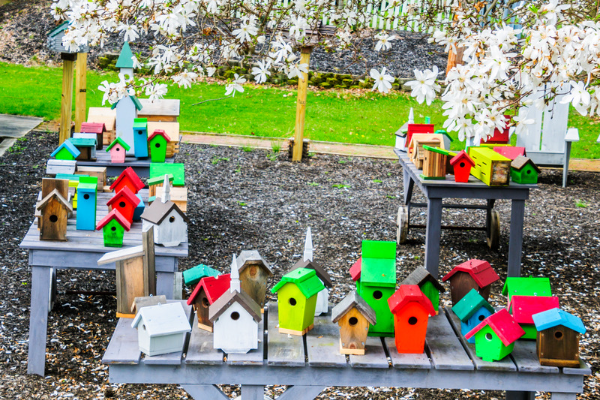
Necessary Facts for Birdwatchers to Understand About Attracting Birds to Their Backyard
It’s very satisfying to attract your favorite birds to your backyard. Other factors come into play as well including the health of your garden, keeping your backyard wild enough to attract insects and other food sources, and maintaining a private and healthy environment.
My best tips besides painted birdhouse colors include the following:
- Provide an available water source – the best way to have a freshwater source available for birds is to install a birdbath in your backyard. During the summer, it’s best to change the water as often as possible. In fact, you should change it every 2-3 days. And to prevent the water from freezing, use a heater during the wintertime.
- Add native plants to your backyard – having native plants in your backyard is a great idea because it provides an additional food source for the birds. Choose seed-bearing plants that drop nectar, nuts, and berries too. Adding shrubs and evergreen trees to your backyard provides cover for the birds throughout the seasons.
- Stop using insecticides in your backyard – most birds eat insects as their primary source of food. The insecticides will kill off the insects and keep your favorite birds away because they will not have an available food source to sustain them. Insects provide a fresh source of fats and proteins for growing birds.
- Leave dead trees in your backyard – this might seem counterproductive but it’s actually a good idea. Many insects will gravitate toward dead trees. Dead trees also provide places for birds to live as they carve out cavities in the rotting wood. Hollowed-out trees also act as shelters for birds in need.
- Provide bird feeders for the birds – normally, you’d have to research this topic to figure out the best bird feeders and food for specific species of birds. But I’ll share more information about bird feeders and the food and colors that will best attract your favorite backyard birds.
Related article: Would You Believe Cardinals Don’t Use Birdhouses?
Bird Species Attracted To Painted Birdhouses
| Bird Species Attracted to Painted Birdhouses | Favorite Colors |
| Bluebirds | Shades of blue |
| Robins | Black |
| Starlings | Blue |
| Flycatchers | Purple |
| Cardinals | Bright Red, White, Green, Yellow, Black |
| Hummingbirds | Red, Pink, Orange, Yellow |
| Blue Jays | Shades of blue |
| Orioles | Orange |
| Goldfinches | Yellow, Green |
| Sparrows | Blue |
| Siskins | Red |
Bird Feeders That Attract Birds With Color
- Robins – these majestic creatures and their young chicks prefer two types of bird feeders. They like hanging platform tray bird feeders or ground tray bird feeders that can certainly be painted black if you prefer. Unfortunately, Robins do not eat birdseed and prefer foraging for insects. You can feed them mealworms, berries, and chopped apples in their birdfeeders.
- Starlings – in truth, most birdwatchers are trying to keep starlings out of their backyard because they are greedy and they’ll eat up all of the bird seed and other food. In fact, they sell starling-proof suet feeders to keep them away, so please keep this in mind.
- Flycatchers – flycatchers like a wide variety of birdseed including safflower seeds, black oil sunflower seeds, and suet. So, you can choose a number of different styles of bird feeders including hanging platforms, ground feeders, or suet feeders. Feel free to paint them purple since flycatchers love the color purple and purple flowers.
- Cardinals – cardinals aren’t picky at all now and pretty much eat out of anything. You can use a platform feeder, hopper, window feeder, tube feeder, or suet feeder. They aren’t picky and they’ll pretty much eat anything, but their favorite seeds are safflower seeds and black oil sunflower seeds. Feel free to paint your bird feeders any of their favorite colors mentioned above but especially bright red.
- Hummingbirds – the best hummingbird feeders include bottle feeders or dish feeders because they meet with their preferred eating style. Plus, these feeders can hold nectar, which is the preferred food of choice for the hummingbird. Feel free to choose a yellow, orange, pink, or red bird feeder since they are the hummingbird’s favorite colors.
- Blue Jays – Blue Jays aren’t picky either when it comes to bird feeders. They gravitate toward suet feeders, hoppers, domed feeder trays, wreath feeders, ground feeders, and platform feeders. They can maintain their natural wood color or paint them various shades of blue to attract the bluebirds even more. These birds love eating suet cakes, mealworms, sunflower seeds, or cracked corn.
- Orioles – there are numerous bird feeders specifically designed to attract orioles, so I highly recommend choosing one of these options. Make sure the oriole feeder is either wood color or the color orange, which is a color that they certainly prefer. They like eating insects including spiders and grasshoppers, but they also enjoy nectar, suet, and fresh fruit including wild black cherries and mulberries.
- Goldfinches – goldfinches love Nyjer seeds, so it’s best to get them an enclosed Nyjer seed feeder. Or if you prefer, you can go with a hanging squirrel-proof seed feeder, a finch magnet bird feeder, or a hanging sunflower seed feeder. They are also very partial to mixed birdseed and sunflower seeds as well. Feel free to paint your birdfeeder yellow or green because they are very attracted to these colors.
- Sparrows – sparrows particularly thrive when using hoppers, ground bird feeders, platform trays, and hanging all-weather feeders. Sparrows are very low-maintenance birds and they’ll pretty much eat anything you put in front of them. But if you really want to attract them, you should stick to sunflower seeds, safflower seeds, thistle seeds, cracked corn, or white proso millet. They also love the color blue, so feel free to paint your birdfeeder your favorite shade of blue.
- Siskins – tube feeders are the ideal choice for pine siskins and other siskins. They absolutely adore eating sunflower seeds, so please feel free to provide them in a plentiful supply. They love peanuts too, so putting them in your bird feeders will definitely bring siskins around to your backyard. If you plan to paint your birdfeeder, feel free to use the color red because they love it a lot.
Birdhouse Color FAQs
Here are some common questions and answers about birdhouse colors. Look for the answers to your most pressing questions below.
What colors are birds most attracted to?
According to a study performed by two young future scientists, we learned that the wide majority of birds are attracted to high-energy colors.
What are high-energy colors? On the color spectrum, they tend to include a variety of green, blue, and purple colors. These colors emit high-energy wavelengths that are very attractive to a plethora of backyard birds. This is great information for birdwatchers to know because they can use these colors to their advantage.
What colors do birds avoid?
Birds only tend to avoid one particular shade or color, which will deter them from spending time in your backyard if you use it to paint colorful birdhouses or bird feeders.
Which color am I talking about? Believe it or not, I’m talking about the color white. They look at this color as a danger and will steer clear of the color white at all times.
Guess what? As a birdwatcher in training, it’s your job to steer clear of the color white as well if you’re looking to attract these beautiful birds to your yard. Wait birdhouses will keep them away. Consider a beautiful green, blue, or purple instead.
Related article: S&K 16 Family Purple Martin Barn Birdhouse Review
What color are birds least attracted to?
According to the same study referenced above, birds are the least attracted to low-energy colors. This includes olive green, mustard yellow, and light and dark orange colors along the same spectrum as various shades of red.
While some birds are attracted to these colors, most tend to shy away from them, so it’s best to avoid them and less you’re attempting to attract a specific bird species that happens to like one of these low-energy colors.
What is the best color to paint a bird nesting box?
This question is difficult to answer because it really comes down to the particular bird species that you’re attempting to attract. Yet, if you’re looking to provide birds with cover to keep them safe from predators, you should use colors that act as camouflage.
Some great color options include earth tones like green, brown, tan, ivory, white, taupe, olive green, sky blue, and gray. These neutral colors are great protection against rival birds and other possible predators that may want to do them harm.
What color do birds love?
Bird species are different. There isn’t one particular color that all birds seem to love. Various studies have proved that bird species have different tastes. As an example, bluebirds and Blue Jays love various shades of blue. Cardinals love various shades of red. Orioles love various shades of orange. Are you starting to see a connection here?
For the most part, though, most birds tend to gravitate toward high-energy colors because of their high-energy wavelengths. These colors include various shades of purple, green, and blue.
Do certain colors scare birds?
Again, the answer to this question is contingent upon the particular bird in some instances. But overall, the one color that birds seem to avoid is the color white. They avoid it because it signals danger to them.
On the other hand, there are various birds that are afraid of the color red. Obviously, this isn’t the case in every situation since cardinals and robins and other red birds certainly prefer it. But white and occasionally red are frightening colors for many birds.
from Bird Informer https://ift.tt/xF2I8CD

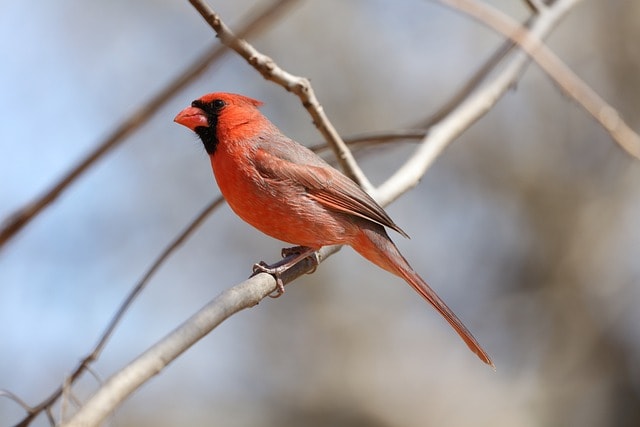
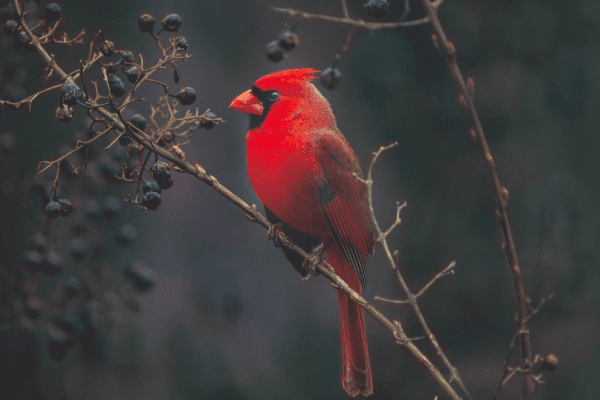
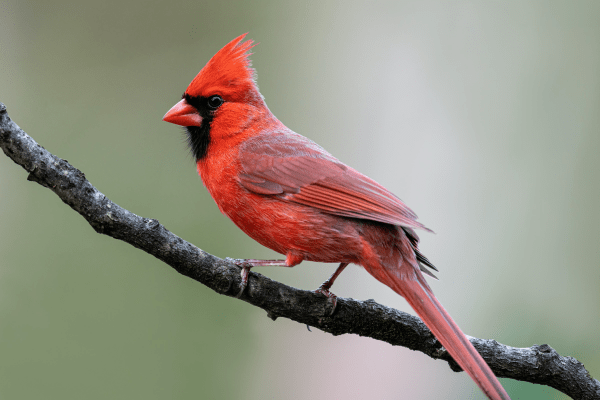
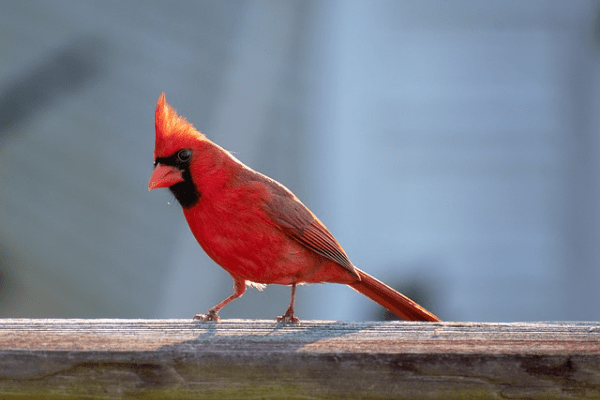
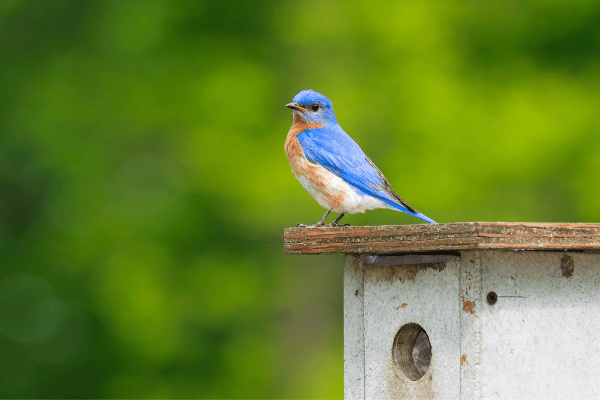
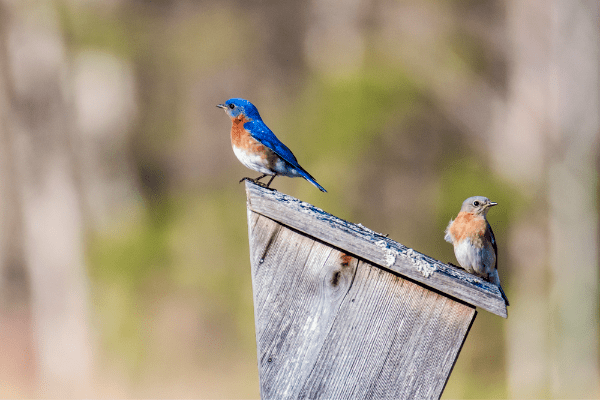
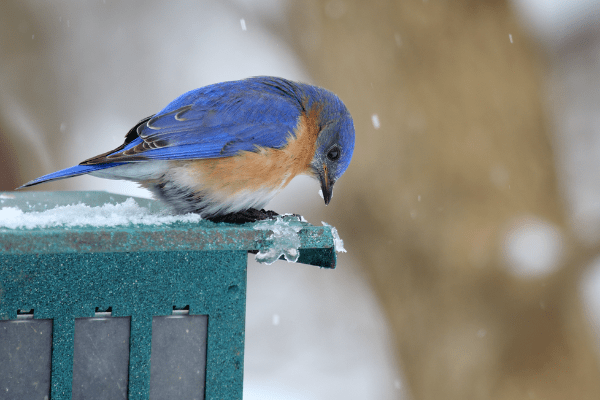
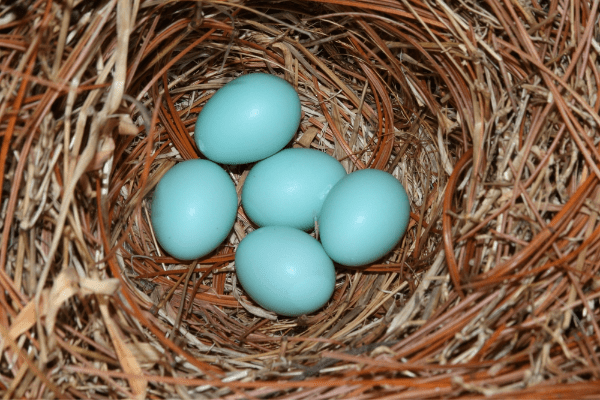
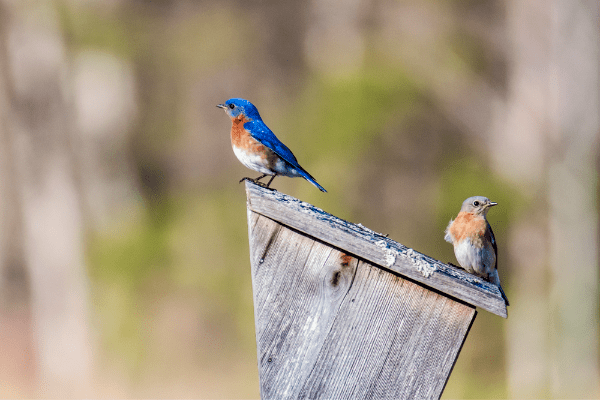
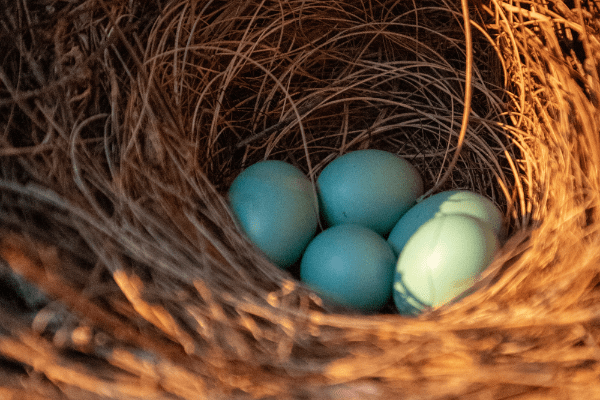
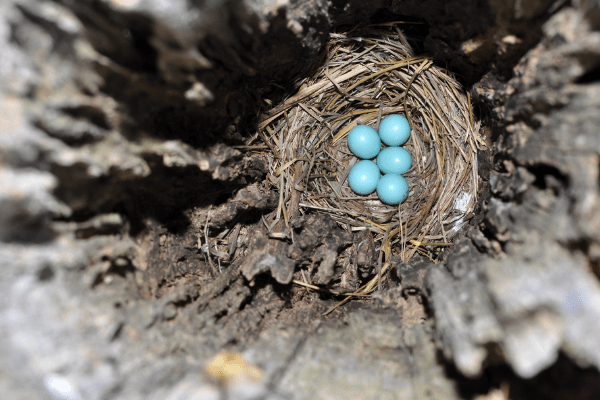
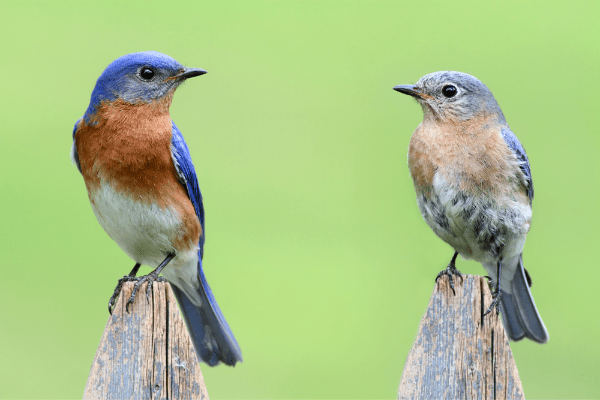
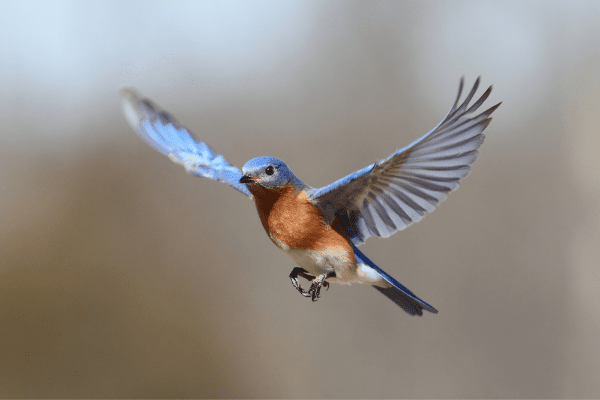
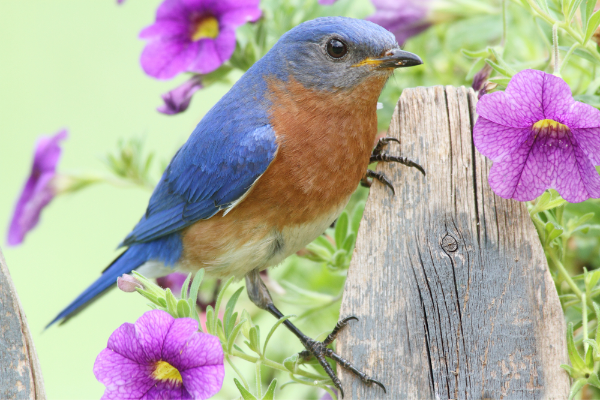
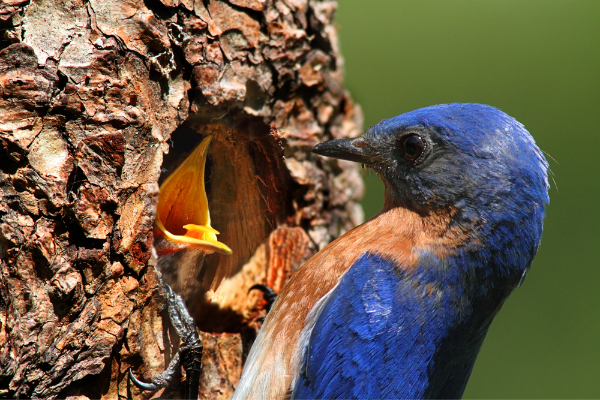
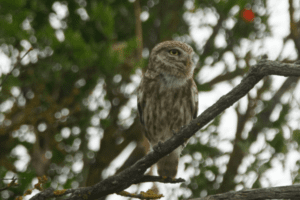
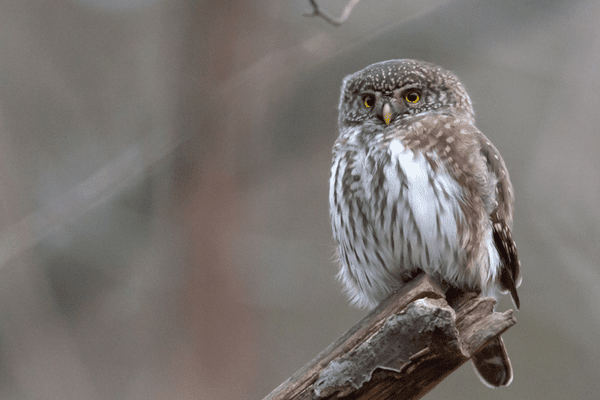
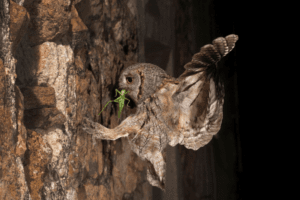
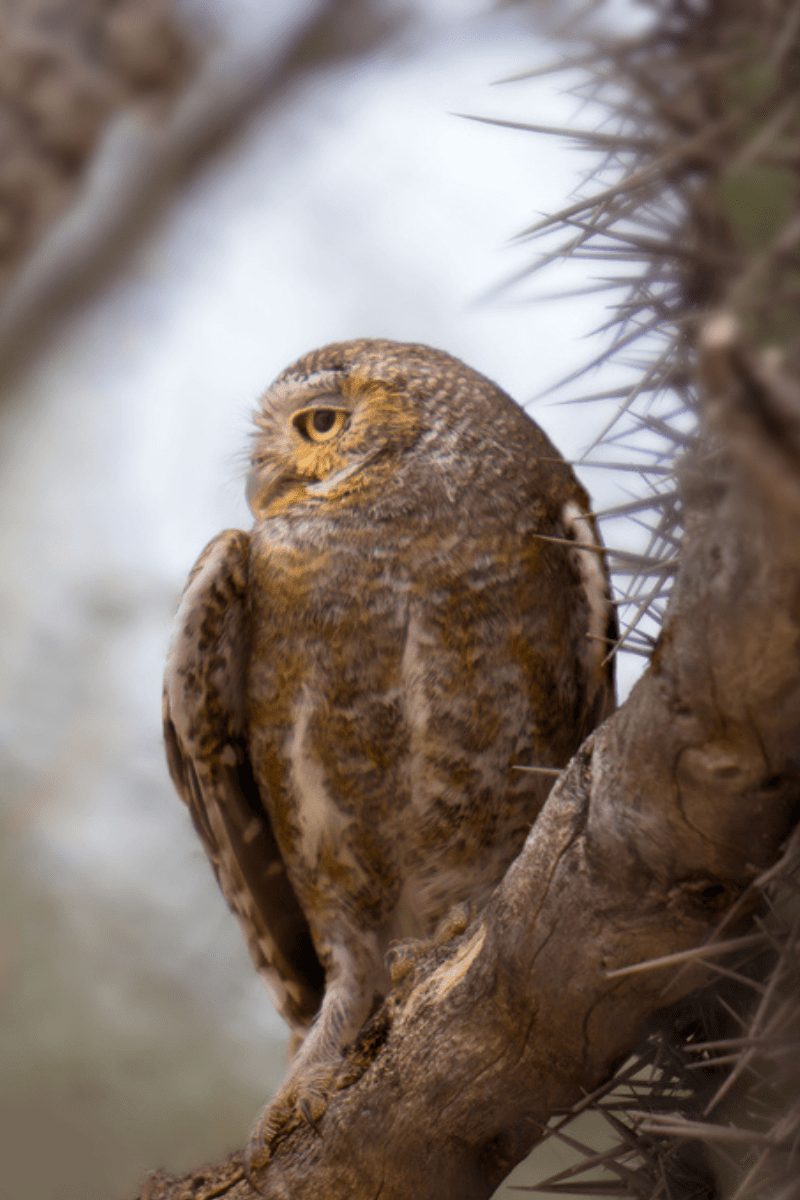 Click Here To Learn More About This Beautiful Creature #Birdinformer #ElfOwl via @birdinformer" style="display:none"/>
Click Here To Learn More About This Beautiful Creature #Birdinformer #ElfOwl via @birdinformer" style="display:none"/>